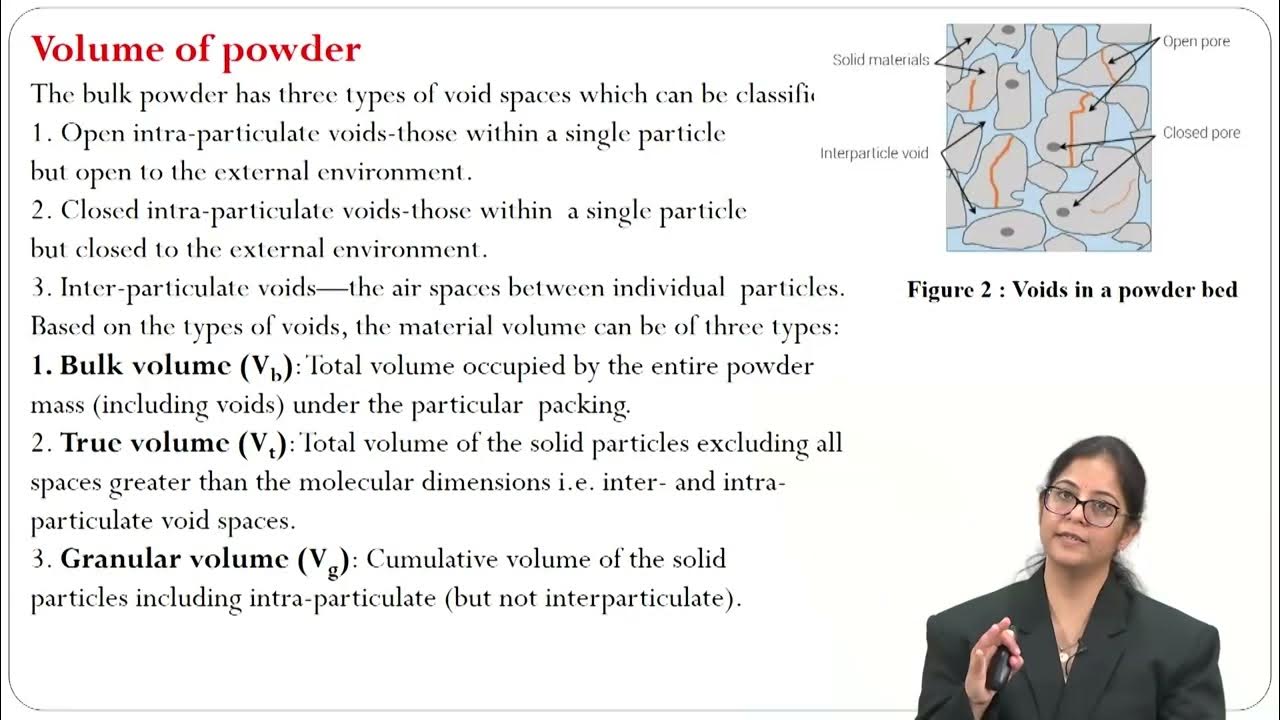DESKRIPSI SIFAT FISIK BAHAN PANGAN 2
Summary
TLDRIn this engaging lecture, Umur Nina Yani explores the physical properties of food materials, focusing on density, porosity, liquid density, and specific gravity. She explains the significance of these properties in food processing and quality control, detailing measurement techniques and their practical applications in agro-industry. Key concepts like bulk and true density, as well as their roles in operations such as coffee sorting and milk quality assessment, are discussed. This informative session highlights the importance of understanding these physical properties for improving food product quality and processing efficiency.
Takeaways
- 😀 Density is the mass per unit volume of a substance, crucial for evaluating food quality.
- 📏 There are two types of density measurements: bulk density (ignores particle space) and true density (precise measurement).
- 🔍 Porosity is an important physical property affecting food texture and moisture retention.
- ⚙️ The relationship between density and porosity can be expressed with the formula: Porosity = 1 - (Bulk Density / True Density).
- 💧 Specific gravity is the ratio of a substance's density to the density of water, and it is dimensionless.
- 🧪 Common mistakes include confusing the density of water as 1, when it actually refers to specific gravity.
- 📦 Specific gravity can be measured using a pycnometer with the formula: SG = (Weight of sample - Weight of empty pycnometer) / (Weight of water - Weight of empty pycnometer).
- 🌱 Data on density and specific gravity is essential in various sorting processes, like grading coffee and egg sorting.
- 🥛 In milk quality assessment, specific density values help detect adulteration, with normal values ranging from 1025 to 1035 kg/m³.
- 🍦 Understanding physical properties like density and porosity helps optimize food processing techniques such as drying, cooking, and extraction.
Q & A
What is the main focus of the lecture by Umur Nina Yani?
-The lecture focuses on the physical properties of food materials, specifically discussing density, porosity, liquid density, and specific gravity.
How is density important in food quality assessment?
-Density is crucial for assessing food quality as it aids in processes like centrifugation, sedimentation, pneumatic transport, and hydraulic transportation of powders.
What is centrifugation, and how does it work?
-Centrifugation is a process that uses centrifugal force to separate mixtures, causing denser components to move away from the axis and form a sediment, while the lighter liquid remains above.
What distinguishes bulk density from true density?
-Bulk density is measured without using an analytical balance and ignores the spaces between particles, while true density involves detailed measurement using an analytical balance and graduated cylinder.
What is porosity, and why is it significant in food processing?
-Porosity is the physical property that affects texture and moisture content in food, and it is important for modeling heat and mass transfer in processes like drying, frying, and extrusion.
What is the formula for calculating porosity?
-Porosity is calculated using the formula: Porosity = (1 - (Bulk Density / True Density)) * 100%.
How is specific gravity calculated and what does it represent?
-Specific gravity is calculated by comparing the density of a solid or liquid to the density of water. It is a dimensionless ratio that indicates how dense a material is relative to water.
What are some applications of density and specific gravity data in food processing?
-These measurements are used in various operations, such as sorting coffee, detecting adulteration in milk, and in the classification of seeds and eggs during sorting.
What role does colloidal density play in food products?
-Colloidal density refers to interactions between dispersed gas phases and liquids in food products, such as in ice cream and whipped mixtures, influencing texture and stability.
What is the significance of maintaining certain overrun values in food products?
-Maintaining specific overrun values ensures the quality and stability of food products like ice cream, where the proportion of air affects texture and mouthfeel.
Outlines

此内容仅限付费用户访问。 请升级后访问。
立即升级Mindmap

此内容仅限付费用户访问。 请升级后访问。
立即升级Keywords

此内容仅限付费用户访问。 请升级后访问。
立即升级Highlights

此内容仅限付费用户访问。 请升级后访问。
立即升级Transcripts

此内容仅限付费用户访问。 请升级后访问。
立即升级浏览更多相关视频

PROPIEDADES DE LA MATERIA. CONCEPTO Y CLASES.

EPE 5211, Class 2, Physical Properties of Agricultural Produce By Yogesh Chouhan

Fundamentals of Pharmaceutical Processes Compaction

CE REVIEW - WEEK 1 | FLUID PROPERTIES

PROPERTIES OF FLUIDS: Different properties of fluids. (Fluid mechanics lesson 2)

Pemeriksaan Berat Volume Tanah
5.0 / 5 (0 votes)
